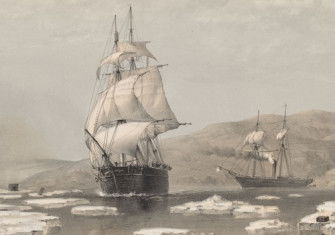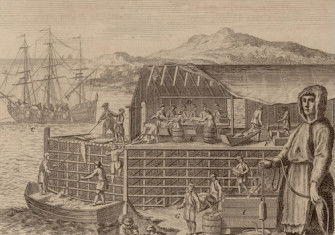Tales from the Ice Age
As the warm Middle Ages gave way to the ‘Little Ice Age’, the abundance of ice inspired trade and technology, captivating and terrifying those who endured life in a cold climate.
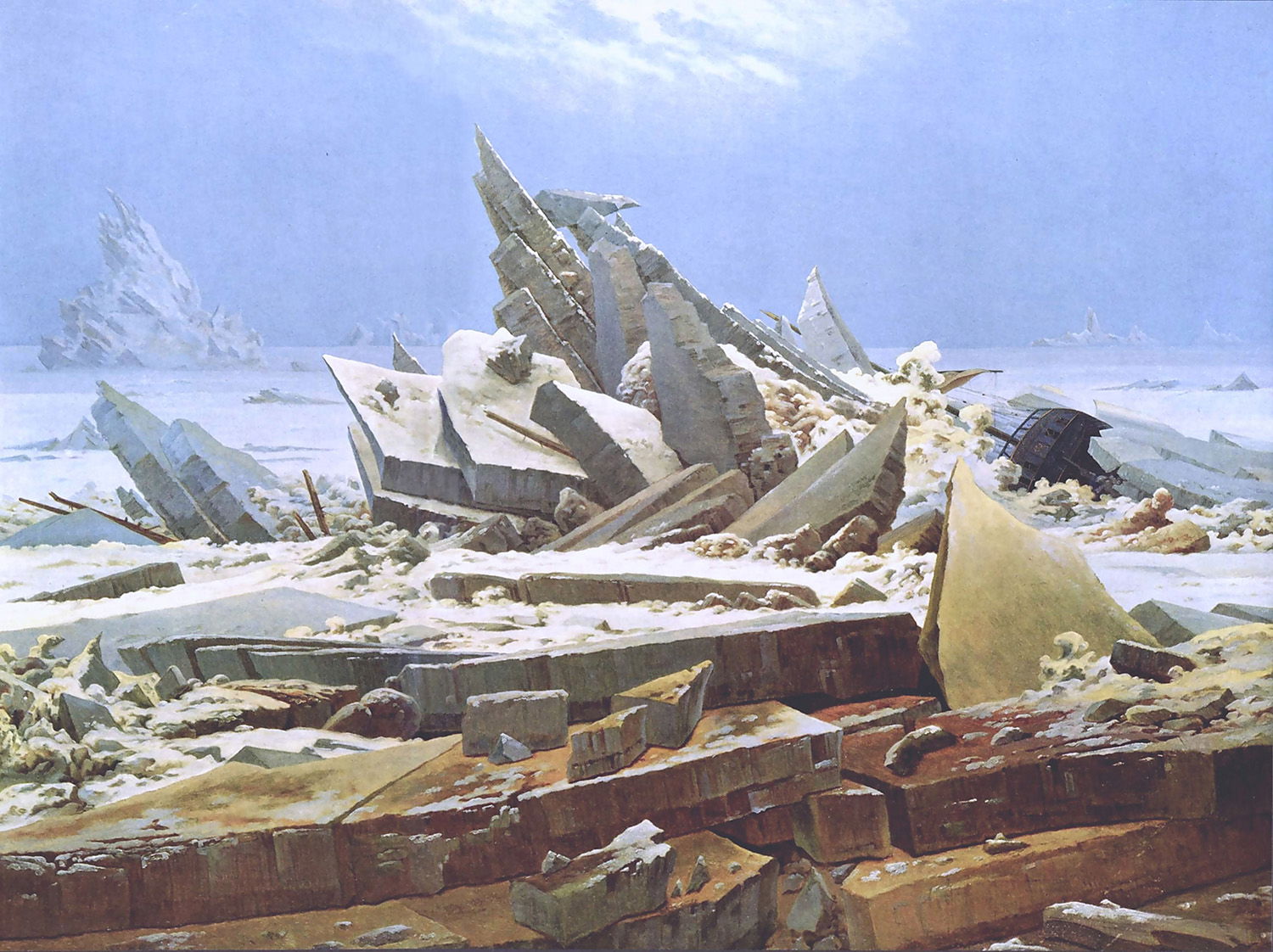
The Sea of Ice, Caspar David Friedrich, 1823-4.
At the turn of the 19th century, Europe was experiencing the end of a ‘Little Ice Age’. The term – coined in 1939 by the Dutch-American geologist François E. Matthes – referred to the period of noticeable cooling which, following the end of the ‘Medieval Warm Period’ in the early 17th century, caused extraordinary change across the Continent. Seas froze, as did many rivers and lakes. Ice became thicker and lasted longer. Shipping became perilous as sea ice expanded further from the coastlines of Iceland and Greenland. Food insecurity became widespread as crop failure prompted immigration to the Americas. Winters were colder and summers were shorter and wetter. Dramatic events, such as the violent eruption of the Indonesian volcano Mount Tambora in 1815, affected the northern hemispheric weather – 1816 became known as the ‘Year Without a Summer’.
In the same year, a young British writer visited the Swiss Alps, which were attracting ever greater number of artists, mountaineers and travellers drawn to its majestic mountains and abundant glacial landforms. As Swiss glaciers advanced, snowlines descended further down into low-lying pastures. There, Mary Shelley found inspiration for a novel infused with romantic sensibility and Gothic horror. Published two years later, Frankenstein portrays its eponymous scientist experimenting with science and technology to produce his monster. For much of the novel Victor Frankenstein finds himself surrounded by ‘vast mountains’, ‘imperial nature’ and, when the pursuit shifts to the Arctic, his ship is ‘immured in ice’, encircled by ‘mountains of ice’. Ice, for Shelley, provided more than a spectacular backdrop; it reflected a psychological state. Writing at a time of climatic shift, Shelley was not alone: Europe had ice on its mind.
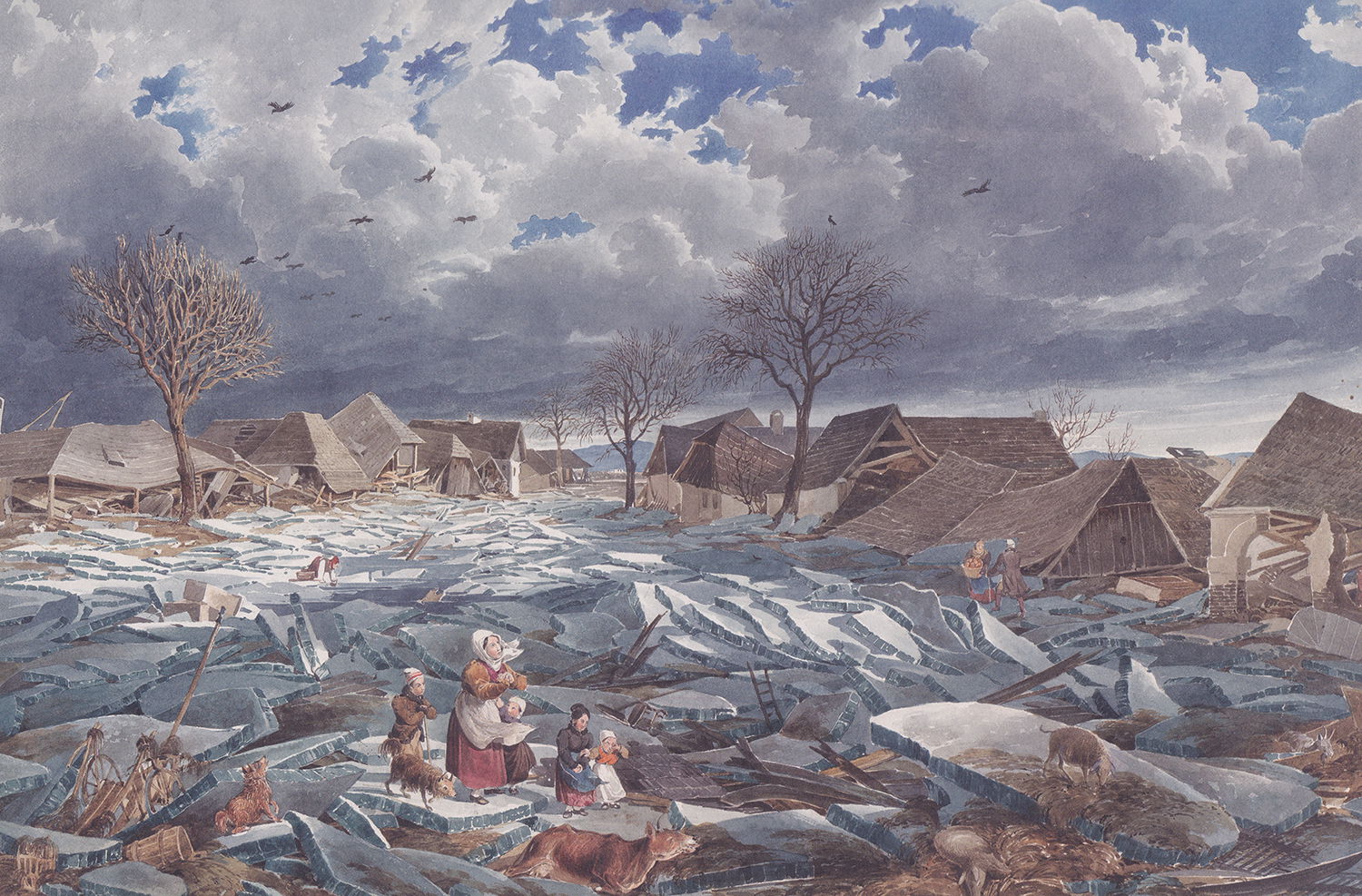
Indeed, the 19th century saw a surge in interest in the aesthetics and physical mechanics of ice. There was awe: Caspar David Friedrich’s Sea of Ice (1823-4) captured the ice’s gothic qualities. Inspired by the frozen River Elbe, Friedrich’s monumental blocks of ice stare skywards as a ship appears to have been crushed beneath the immense slabs. Escape or rescue seems impossible: the ice is contemptuous of human ambition to explore and navigate polar waters. Ice exercised a complicated grip on European creative and experiential sensibilities. It was terrifying, but captivating.
There were attempts to understand: Swiss geologist Louis Agassiz (1807-73) would become the undisputed champion of ‘glacial theory’. His Études sur les glaciers (1840) started systematic scientific reflection on glacial dynamics and behaviour. Modern glaciology owes its genesis to his pioneering work. Although not the first to speculate that glaciers were moulded by climatic forces, Agassiz consolidated a conviction among European scientists that biblical forces were not responsible for carving and sculpturing of the earth. The Little Ice Age provided ample opportunity to reflect first hand on glacial advance, and verify Agassizs’ thesis. 1850 was recognised as the endpoint of a long period of cooler weather, as warmer and drier summers returned.
Experiencing high altitude snow and ice was something that very few Europeans enjoyed in the 19th century. The popularisation of Alpine skiing was to come in the 20th century. Most people did not have access to ice – its supply from mountainous areas was limited and expensive. For the wealthier scions of society, the construction of ice-houses facilitated refrigeration. The preserve of the wealthy, recreational use of Alpine ice such as sorbet and shaved ice was a luxury.
In Spain, for example, it became possible to savour ice in the hot summer months. There was a lucrative ice trade courtesy of the Sierra Nevada mountains in Andalucía. Ice was cut and stored in snow caves and cisterns. In the summer, it was moved to cities such as Granada by pack mules. Descending thousands of feet, ice not only enriched the preservation and cooling of food and drink but also informed medical debates about the restorative power of the cold. By the 19th century, Granada and southern Spain was a hotspot for ice and snow engineering. Arabs and Christians alike showed great ingenuity when it came to harvesting, storing and maintaining an ice trade. Visitors to the Sierra Nevada mountains can still see the storage sites (pozos) where snow and ice were once stored.
But the ice trade was also an international affair. In the 19th century Norwegian ice was much in demand and the port of London was an important shipping point. Trade between the two countries began in the 1820s when English merchants learned of Norwegian ice being exported around the world, including to India. By 1850, Norway had become the UK’s dominant ice supplier. Chances are that if you consumed ice in 19th-century Britain, it was from Norway’s glaciers, fjords and mountains. Trade journals such as Cold Storage launched in the UK explaining and encouraging the virtues of ice for refrigeration and storage. Ice was a lucrative business for Norway and it was cheaper to import than American ice from the eastern states, such as Massachusetts. Norway’s advantage was also aided by an abundance of sawdust from its timber industry, used in great quantities to help ships transport ice and stall the melting process.
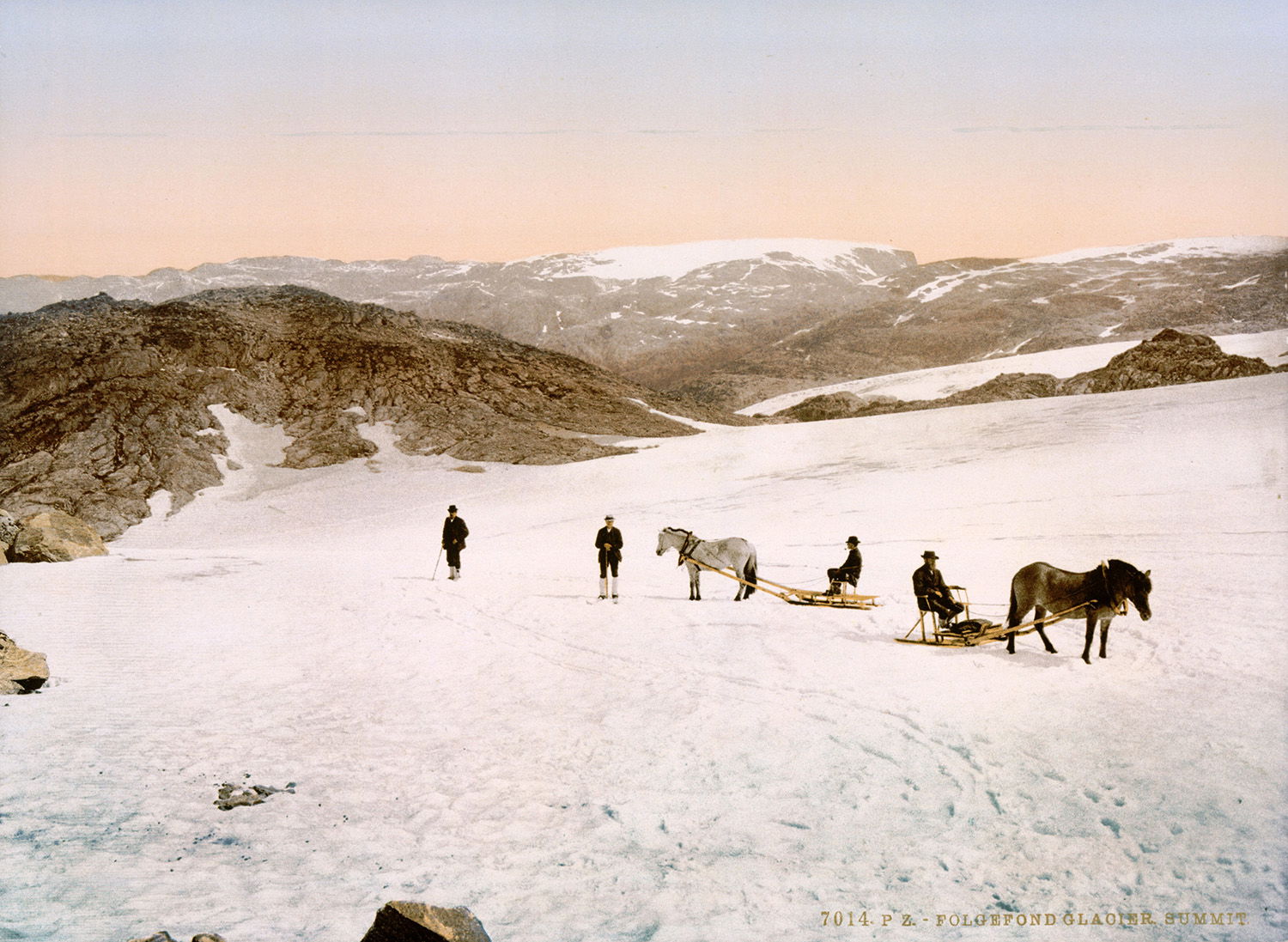
When artificial ice and mechanical refrigeration were developed in the 20th century, the natural ice trade declined markedly. Norway no longer enjoyed a near-monopoly on the UK market. American ice was no longer transported to India. Techniques for making artificial ice began to yield quantities large enough for fresh produce to be transported successfully across continents. The proliferation of the fridge freezer, from the 1920s onwards, radically altered the production, storage, consumption and advertising of food as refrigeration units on trains allowed US food producers to move their commodities across the country.
Ice is tied up with the history of technology and trade, but it is also integral to popular culture and national identity. In Norwegian, for example, there are descriptions aplenty for the country’s relationship to ice and snow. Norwegians might refer to ice and snow-melt using an array of words from tøya, bråna and tina, to kakelinne, which signifies mild weather (with corresponding snow-melt) in December when Christmas cakes are being baked. In Swedish Ingen ko på isen is usually translated as ‘no cow on the ice’, meaning that there is nothing to worry about.
Norse legends provide a rich reservoir of stories about ice, snow, darkness and the cold. One of the most famous involving ice is Skadi, the goddess of mountains and ice, who is often depicted as a hunter and an accomplished skier. It was later said to have inspired Hans Christian Andersen’s Snow Queen. During the long polar nights, mysterious creatures ranging from trolls and wizards to ghosts and creatures emerge, able to transform from animals to islands. Stories about being in the grip of supernatural forces complemented the real experience of population decline and crop failure in Iceland and Greenland.
For countries which experience long and brutal winters, such as Russia, snow and ice have particular significance. Poetry, art and literature have proven capacious vessels to express and represent a Russian landscape blanketed by ice. In Alexander Pushkin’s ‘Winter Morning’ (1829), the Russian winter is described as idyllic:
Under vivid azure skies
A luxurious pure carpet lies –Snow, sparkling in the brilliant light.
Bare trees present their blackening sheen;
Through the white, spruce growing green;
Beneath the ice, a river glistening bright.
But winters could also be vicious and prove decisive in shaping European geopolitics. The French painter Joseph-Ferdinand Boissard captured the reality of Napoleon’s disastrous Russian campaign in 1812 in his painting Episode in the Retreat from Moscow (1835). The two French soldiers slumped by a dead horse appear to have been abandoned by the retreating troops; they might already be frozen to death. As Napoleon discovered, advancing and retreating armies need feeding and when ice covers the ground horses need snowshoes otherwise their capacity to pull wagons and supplies is compromised. Ice is a formidable enemy.
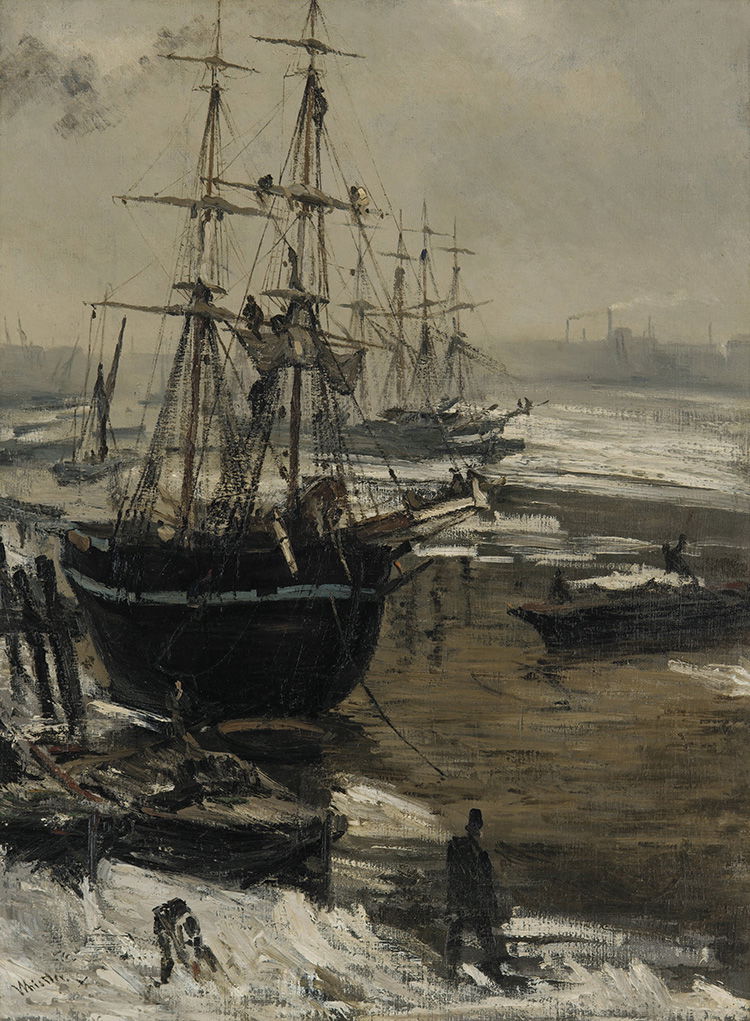
Across Europe, many – like Napoleon, no doubt – wished for the ice and snow to disappear. As the Little Ice Age eased in the late 1840s, a new wave of ‘polar fever’ enveloped European and American sponsors of Arctic expeditions eager to traverse the Northwest Passage and discover an ‘open polar sea’. For some this hubris was to prove disastrous. Sir John Franklin’s expedition simply disappeared in 1847. All perished and his expedition’s failure was made all the more shocking when it was suggested that some of the men may have engaged in cannibalism in their attempt to survive.
Yet belief in an ‘open polar sea’ fed hopes that Franklin might have survived. The geographer and cartographer August Heinrich Petermann was instrumental in generating optimism. A leading propagator of ‘open polar sea’ theories, he moved to London in 1847 and found a receptive audience. He advised the search and rescue missions for Franklin and his 129-strong expedition and advised expeditionary planning for a succession of German Arctic initiatives designed to prove that ships should be able to sail across the North Pole and establish new trade routes with Asia. Climate change and sea ice retreat is now making the idea of an ‘open polar sea’ less an intellectual flight of fancy and more a future reality. Thinking about ice appears timely, as we enter a new era warning of its death.
Klaus Dodds is the author of Ice: Nature and Culture (Reaktion, 2018).



